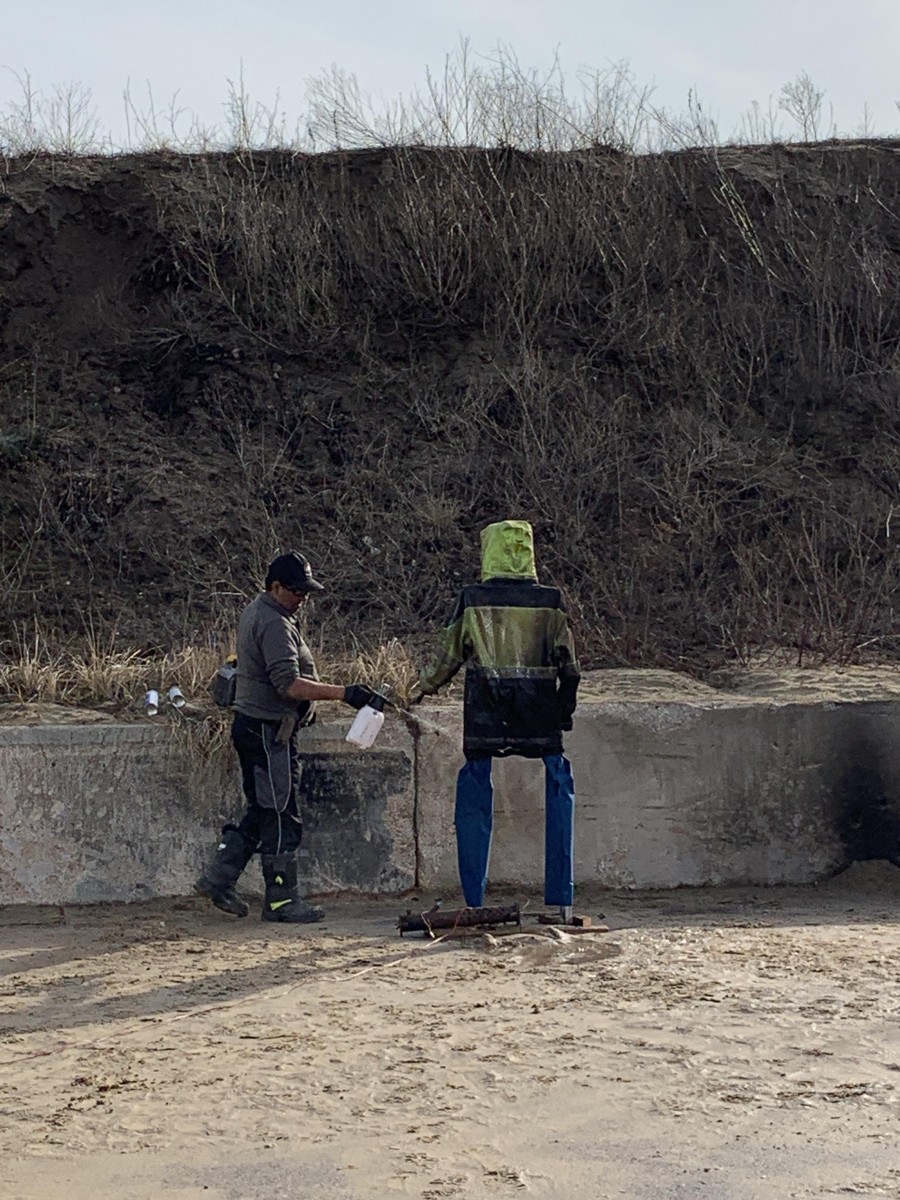"Burn it down!"
Part 1 - Fitness-for-use testing at GORE-TEX Professional. Blog by Andreas Marmsoler

This project was still in its infancy, but it has already caught the attention of everyone involved, as we wanted to test the flame resistance of various GORE-TEX PYRAD® product constructions. Of course, the products are tested extensively in the Gore lab environment before they are used, such as horizontal external flame (EN ISO 15025-A), measurement of transmitted energy and prediction of burn risk using a sensor-equipped manikin (ISO 13056:2017) also known as Pyroman or ThermoMan. These are mostly tests that simulate extreme situations in a standardized test environment. But what happens to the garment in a real, mock end-use situation such as Molotov cocktail attack on a federal police officer. How does the garment look, how does the wearer of the garment feel about it? Initially, we had the idea that we would test it ourselves on a discarded mannequin and record it by means of photographs.
But then, this was the outcome of the project:
· two days test trials
· five different fire situations
· a professionally trained stuntman team
· a special effects technology team working for film and television productions
· three photo and two video cameras
· plenty of new insights for the GORE-TEX Professional product specialists.

Molotov cocktail & Co.
Specifically, we wanted to test GORE-TEX PYRAD® product designs to see how the technology would perform, for example, in a Molotov cocktail attack on riot police or a refueling accident during a military aircraft refueling operation. But we also wanted to explore the use of technical rescue personnel, for example in a car accident, where liquids can suddenly ignite.

Special effects
After an initial conversation with special effects expert Jan Singh, it was clear that we would do the tests with a professional stuntman instead of a mannequin. The background to this decision was that certain sequences could be simulated much more realistically. With Jan Singh and his team, we had experts at our side who have been producing special effects such as fire, explosions, rain, snow, bullet holes in car windows, and much more for television productions or advertising for 22 years. For our experiments, we needed scenarios that were as realistic as possible, because we did not want to create huge explosions or special effects, as they are often used in Hollywood productions for the sake of entertainment.

Professional stuntman, test site and safety precautions
In order to be able to carry out such scenarios safely, we had to find a suitable location. A gravel pit operator in Bavaria granted us the necessary permission for the tests and - in close collaboration with the Stuntteam Germany - organized the local fire department to supervise the tests. The latter not only provided a professionally trained stuntman, but also took care of additional protection of the stuntman and filmcrew during the tests to exclude any risk of injury.

Test setup
The first day was a trial day. First, we had to discuss exactly the tests we had received based on user feedback with the special effects team and the stunt team. To simulate this, we set up a wooden dummy and tested the respective fire situation directly on the dummy. At the same time, we discussed the situation with the stunt team and instructed the stuntman exactly what to do in which situation. Paul Jennewein, Product Specialist GORE-TEX Professional for Defense, said he had already gained very important insights for his product development on the trial day. Then, on the next day, it was time to implement the five test scenarios. More about this in the next blog post.
